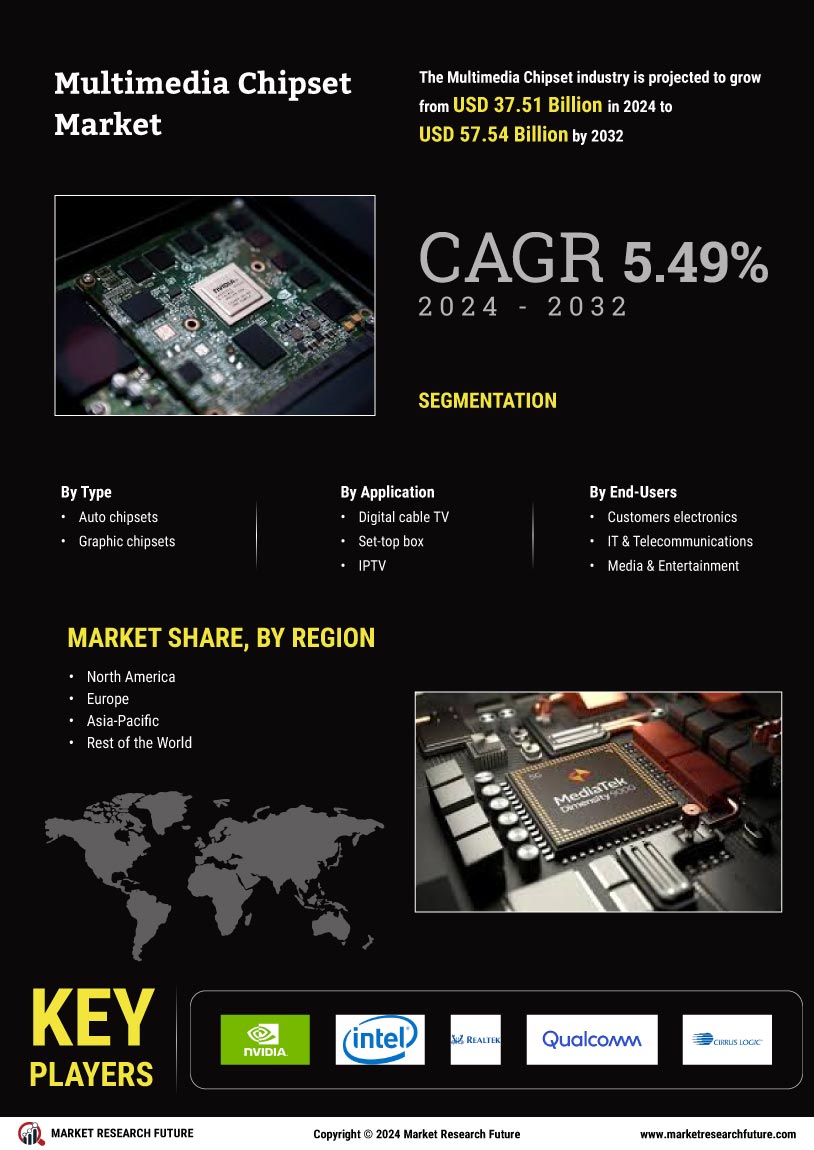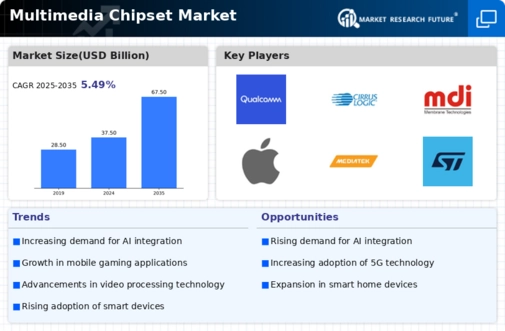Leading market players are investing heavily in research and development to expand their product lines, which will help the multimedia chipset market grow even more. There are some strategies for action that market participants are implementing to increase their presence around the world's global footprint, with important market developments including new product launches, contractual agreements and acquisitions, higher investments, and collaboration with other organizations. To expand and survive in a more competitive and rising market climate, the multimedia chipset industry must offer cost-effective items.
Manufacturing locally to minimize operational costs is one of the key business tactics manufacturer use in the global multimedia chipset industry to benefit clients and increase the market sector. In recent years, the multimedia chipset industry has offered some of the most significant technological advancements.
Major players in the multimedia chipset market, including NVIDIA Corporation (U.S.), Intel Corporation (U.S.), Realtek Semiconductor Corp (Taiwan), Qualcomm Inc. (U.S.), Cirrus Logic Inc. (U.S.), Advanced Micro Devices Inc. (U.S.), DSP Group, Inc. (U.S.), Apple Inc. (U.S.), Broadcom Corporation (U.S.), Marvell Technology Group, Limited (U.S.), Samsung Group (South Korea), Actions Semiconductor Co., Ltd. (China), MediaTek Inc. (Taiwan), NXP Semiconductors, N.V. (Netherlands), STMicroelectronics (Switzerland), and others are attempting to grow market demand by investing in research and development operations.
NVIDIA created accelerated computing to solve issues that no one else can. Our work in AI and the metaverse, which has a tremendous impact on society, is transforming the biggest industries in the world. Since its founding in 1993, NVIDIA has dominated the field of accelerated computing. The company's 1999 release of the GPU ushered in the current era of artificial intelligence, revolutionized computer graphics, and is fueling the growth of the metaverse. It also fueled the growth of the PC gaming industry.
NVIDIA is now a full-stack computing company that is revolutionizing the market with its products at the size of data centers. In March 2023, Nvidia recently introduced a collection of cloud services to assist companies in creating and using generative AI models built for "domain-specific tasks," such as composing ad text and training on unique data.
Intel is a market leader, developing technology that transforms the world and improves people's lives. Inspired by Moore's Law, we strive to improve semiconductor design and production to meet our client's most pressing needs. We unleash the power of data to improve business and society by integrating intelligence into every computing device, including the cloud, network, edge, and edge computing. The goal of Intel is to influence technology's development so that everyone on the planet can live in better times. Intel has advanced numerous industries, including artificial intelligence, analytics, and cloud-to-edge technology.
In February 2023, Intel announced the start of the Intel® Connectivity Analytics program to help wireless solution providers develop special networking and system insights – from network health and security to customer experience and service quality – to deliver better customer apps and services.

















Leave a Comment